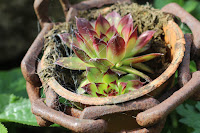10 steps to creating good lighting in your paintings
Hello, today I'm sharing 10 tips for creating light in painting. Let me know what you think in the comments below, and if you have any further tips to share with us.
1. Observe Real Light Sources
Begin by observing light in the real world. Notice how it interacts with different objects, the way it casts shadows, and the varying intensities it presents. This practice will deepen your understanding of light and enhance the realism in your paintings.
2. Utilize Reference Photos
Even when painting from imagination, reference photos are invaluable. They provide a clear example of how light behaves in various settings, helping you to replicate these effects in your own work.
3. Understand Colour Temperature
Light is not just about brightness; it's also about colour. Warm light, like sunlight, imparts different hues compared to cool light, such as moonlight. Integrating these temperature variations can add a new dimension of realism to your art.
4. Create a Focal Point with Light
Use light strategically to direct the viewer's eye to the central subject of your painting. Brighter areas naturally attract more attention, making them perfect for highlighting your focal points.
5. Consider the Time of Day
Light changes with the time of day. Morning light differs vastly from sunset hues. Ensure your painting's lighting aligns with the specific time of day you're depicting for a consistent and believable atmosphere.
6. Experiment with Shadow
Shadows are crucial for adding depth and realism. Pay attention to their direction, length, and the softness or hardness of their edges, which all depend on your light source.
7. Use Contrasting Light and Dark Areas
Contrast can be a powerful tool. Using light and dark areas in juxtaposition can create dramatic effects and help define forms and structures within your painting.
8. Practice with Simple Forms
Before jumping into complex scenes, practice painting simple forms like spheres and cubes under various lighting conditions. This exercise will refine your understanding of how light works.
9. Layering and Glazing Techniques
In mediums like watercolour or oil, employing layering or glazing techniques can create a luminous quality. This approach allows for a more nuanced and subtle representation of light.
10. Reflective Light
Finally, remember that light doesn't exist in isolation. It bounces off surfaces, creating reflected light. This reflection can significantly affect the colour and value of shadows and nearby objects, adding another layer of realism to your work.
By incorporating these tips into your painting process, you'll see an improvement in how you depict light. Remember, practice is key, so keep experimenting and observing. Happy painting!



.png)
Comments
Post a Comment